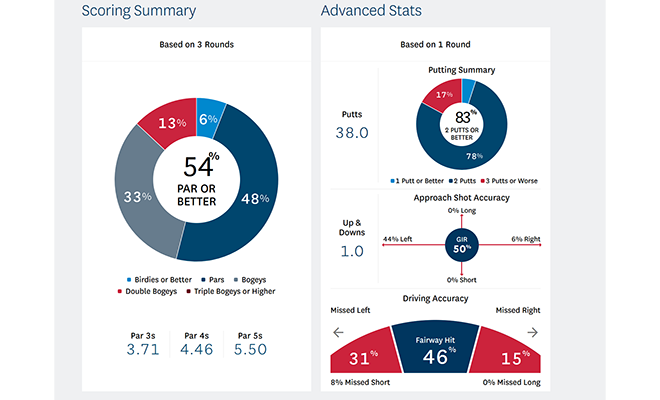Handicap Index Calculation

We receive a fair number of inquiries about the Handicap Index® and why it is not changing/not changing fast enough, not low enough, not high enough, etc., so it feels like a good time to review the calculation.
First off, we’ll start with the formal definition of a Handicap Index:
“The measure of a player’s demonstrated ability calculated against the Slope Rating™ of a golf course of standard playing difficulty (that is, a course with a Slope Rating of 113).” The important point here is this decimal value is not golf course or tee specific. It is converted into a Course Handicap™ to get the right number of strokes needed for a tee on a particular golf course.
The demonstrated ability element is based on a better portion of a player’s Score Differentials™ (scores are converted to Score Differentials that utilize the Course Rating™ and Slope Rating™ to determine which rounds are better) and in the case of a full scoring record this is the best eight of the most recent 20 Score Differentials. If all 20 Score Differentials were utilized, the player with a wider dispersion in scores (statistically higher-handicap players) would have an advantage and equity would not be maximized. Score Differential = (113/Slope Rating of Tees Played) x (adjusted gross score – Course Rating – PCC playing conditions calculation adjustment)
∙ 95 on a 69.8/124 results in a Score Differential of 23.0
∙ 96 on a 71.5/124 results in a Score Differential of 22.3
Two things to point out in comparing the two examples above:
1) The higher score, 96, resulted in a lower/better Score Differential; the 22.3 would be utilized before the 23.0.
2) The Slope Rating was the same for both scores, but the 96 resulted in the lower Score Differential. For those focused (obsessed) on Slope Rating regarding “difficulty,” this shows that Course Rating plays a key role in every Score Differential calculation. It is so exciting to type this point!
When looking at a scoring record and seeing asterisks denoting the “used” rounds, make sure to look at the resulting Score Differential to see that a lower score may not have an asterisk while a higher score does.
The average of the eight best Score Differentials is the baseline in the calculation of the Handicap Index.
If a player posts a poor score, resulting in a not-so-great Score Differential, this does not automatically result in a change in the Handicap Index. The eight best composite of Score Differentials of the most recent 20 scores averaged may remain the same, which normally means the Handicap Index remains the same.
For new golfers a Handicap Index will be calculated after 54 holes (any combination of nine- and 18- hole rounds).
Handicap Index values are calculated shortly after midnight.
There are some other checks and balances in the formula, including the cap procedure that has been discussed previously, where the difference between the average of the lowest eight Score Differentials is at least 3.0 greater than the Low Handicap Index™, yet for a complete 20-score record the eight best of 20 Score Differentials are important in the calculation every single time.










